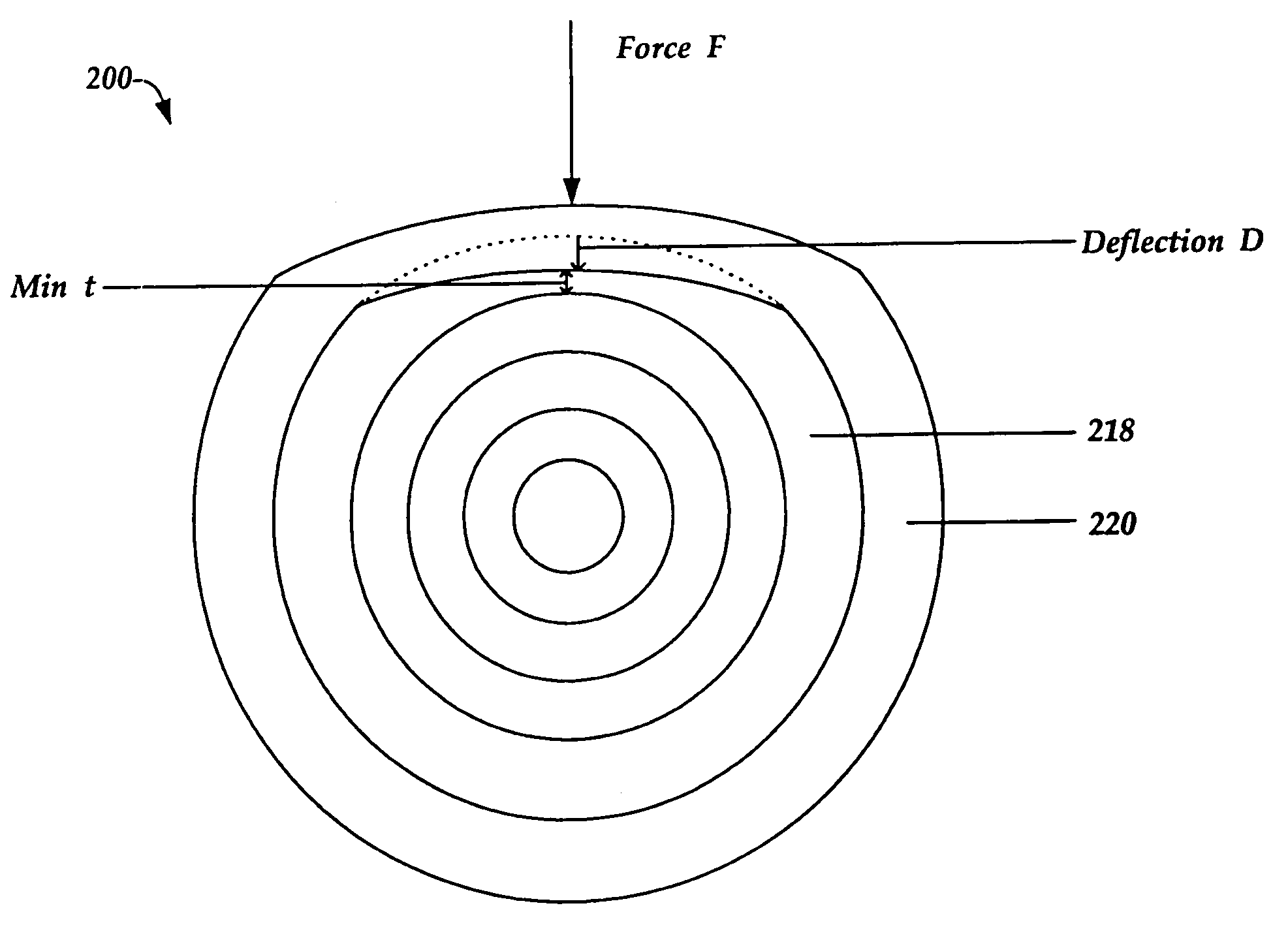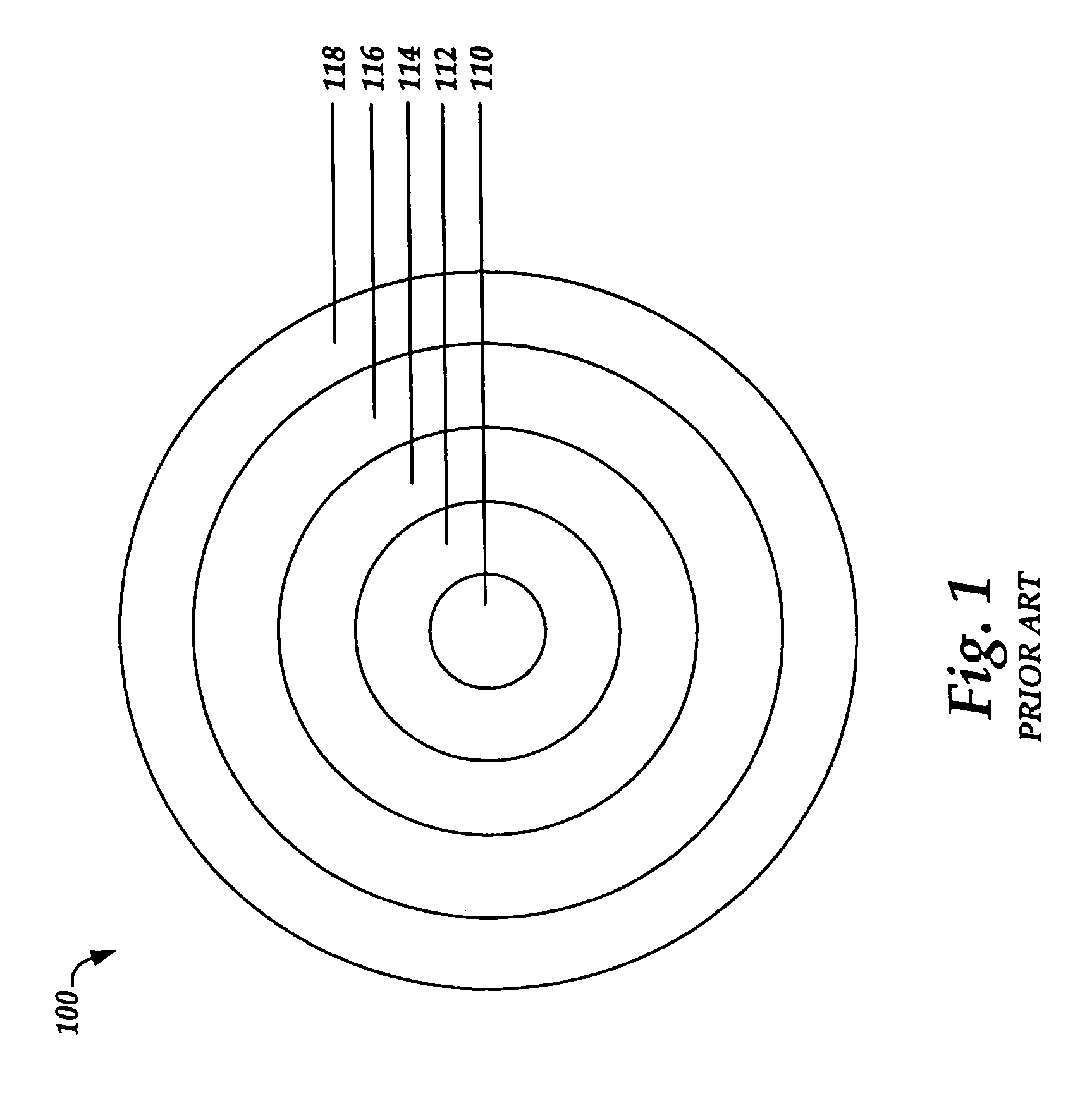Compressible layer for fiber optic cable
a fiber optic cable and compression layer technology, applied in the direction of optical fiber with multi-layer core/cladding, optical waveguide light guide, instruments, etc., can solve the problems of fiber optic cable being susceptible to a unique problem, causing significant pressure on the fiber optic cable within the conduit, signal degradation, etc., to prevent signal degradation, prevent or minimize the movement of the fiber optic core, the effect of preventing signal degradation
- Summary
- Abstract
- Description
- Claims
- Application Information
AI Technical Summary
Benefits of technology
Problems solved by technology
Method used
Image
Examples
Embodiment Construction
[0012]Signal degradation due to ice-induced bending of the fiber optic strands of a fiber optic cable may be minimized through embodiments of the present invention. FIG. 1 shows the various layers of a typical fiber optic cable 100 as known in the art. The core 110 of the cable is made up of at least one strand of transparent dielectric material, usually glass filament. A layer of fiber coating 112 surrounds the core 110. The fiber coating 112 is made from one or more layers of material of lower refractive index than that of the core. An overcoat 114 surrounds the fiber coating 112. The overcoat 114 is made from plastic or other polymer material. The overcoat 114 may include a high heat resistant thermoplastic resin (not shown). The layer that surrounds the overcoat 114 is the strength member 116. The strength member 116 is a strengthening layer that is included to protect the fiber optic core from excessive tensile and bending stresses. This layer is typically formed from aramid ya...
PUM
 Login to View More
Login to View More Abstract
Description
Claims
Application Information
 Login to View More
Login to View More - R&D
- Intellectual Property
- Life Sciences
- Materials
- Tech Scout
- Unparalleled Data Quality
- Higher Quality Content
- 60% Fewer Hallucinations
Browse by: Latest US Patents, China's latest patents, Technical Efficacy Thesaurus, Application Domain, Technology Topic, Popular Technical Reports.
© 2025 PatSnap. All rights reserved.Legal|Privacy policy|Modern Slavery Act Transparency Statement|Sitemap|About US| Contact US: help@patsnap.com



